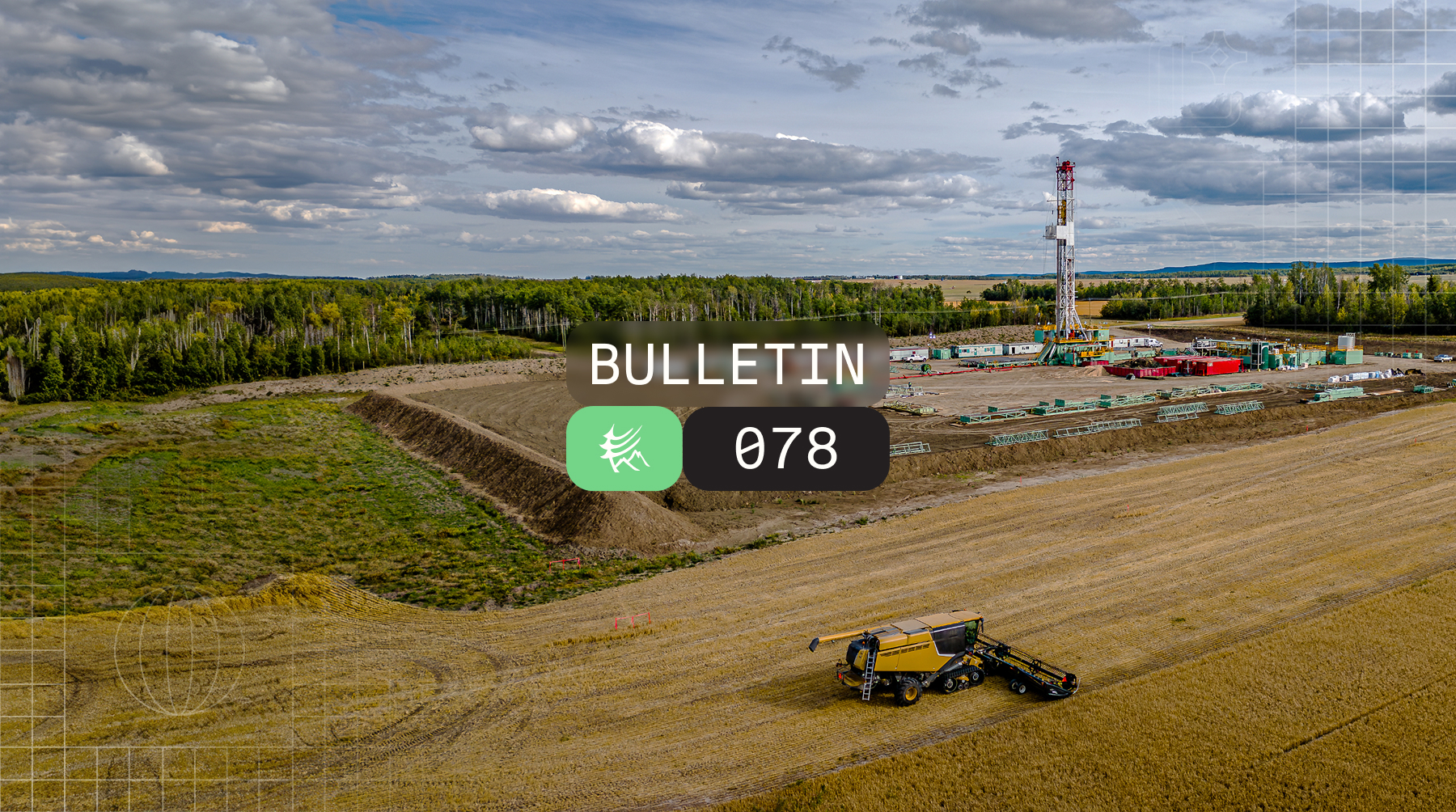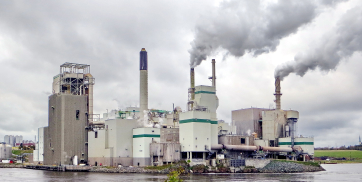Methane detection and quantification science continues to advance at a rapid pace. In this edition of the Research Digest, we catch you up on satellite technology, top-down vs. bottom up reconciliation, life cycle assessments, and more!
“Clear Eyed Assessment” of 9 Methane Detecting Satellites.
82 single blind controlled release tests are performed during satellite overpasses of GHGSat-C WorldView-3, EnMAP, Gaofen 5, Ziyuan 1, Huanjing 2, PRISMA, LandSat 8 and 9, and Sentinel-2. The authors report that, generally, the wider the path a satellite senses (swath), the higher its minimum detection limit will be. The analytical methods produced 0 false positives for methane emissions, which includes considerations of difficulties due to cloud cover interference and water body enhancement. The authors report these findings as a step toward confidence in satellite found methane emissions here.
Investigation of TROPOMI’s Global Satellite Coverage.
TROPOMI onboard the Sentinel-5P satellite is a methane detection instrument with daily global coverage. To understand its limitations, researchers generated a gridded global map of days with valid observations from TROPOMI for 2019–2021. Observational coverage over dryland regions is found to be promising (as high as 58.6%), but coverage over tropical regions and high latitudes is limited (as low as 0%). At high latitudes, coverage is affected mainly by cloud cover and solar angle, whereas particulate optical thickness was the main factor affecting coverage in dryland. In the 160 countries evaluated, 7 of the top 10 oil producing countries had TROPOMI observational coverage for less than 10% of the year. The authors recommend that alternative methods should be considered for oil and gas emissions monitoring in tropical and high latitudes, in countries such as Canada, Russia, Brazil, Norway, and Venezuela, here.
Hybrid Measurement Based Emissions Inventory in Alberta
Data from gas mapping LiDAR (Bridger Photonics), mass balance flux (Scientific Aviation), satellite methane retrieval (TROPOMI), prior emissions, and chemical transport models are combined. The authors provide a hybrid top down/bottom up, measurement based, source resolved methane inventory for the upstream oil and gas industry in 2021 in Alberta, Canada. The analysis results in 1.3 million tonnes/year, approximately 1.8× the most recent official federal inventory. The authors find venting is responsible for almost 2/3 of emissions and suggest uncontrolled tanks, pneumatics, and unlit flares are important opportunities for mitigation here.
Geostationary Satellite Quantifies Mexican Pipeline Release
Data from the Geostationary Operational Environmental Satellite constellation is analyzed to track an extreme methane release from the El Encino – La Laguna pipeline. This event is quantified at a total of 1130-1180 metric tons of methane released over a 3 hour period in May, 2019. The potential for geostationary monitoring of large methane sources is asserted; the authors recommend that their retrieval techniques can be applied to similar satellite systems here.
Machine Learning for Satellite Plume Detection
An automated, machine-learning-based algorithm is applied to 2021 TROPOMI data. 2974 plumes are detected, with an average source rate of 44 t h−1. The researchers find the majority of these plumes (74.8%) originate from 94 persistent groups of sources. Bottom up inventories show 45% of these plumes are related to oil and gas infrastructure. Specific super emitting locations are identified, which the authors state is paramount for reaching the goals of the Global Methane Pledge, here.
CHOPS Emissions and Underestimated Emission Inventories in Upstream Saskatchewan
Inventory estimates suggest Saskatchewan’s upstream emissions have reduced by 47% from 2012 levels, overwhelmingly from reduced venting; however, this reduction is disputed with inclusion of aerial lidar surveys of cold heavy oil production with sand sites (CHOPS). The authors caution that current inventory reporting in Saskatchewan consistently underestimates emissions — by as much as 30-40% — without incorporating CHOPS measurements. The authors provide an analysis of operator administrative fees for exceeding CO2e emission limits, a total of $2.2 million in 2022, here.
Coal versus Gas Life-Cycle GHG Emissions
Aiming to understand the pros and cons of natural-gas as compared to coal, different scenarios are compared for the two resources with varying timeframes, gas contents, methane leakage, sulfur content, and scrubber efficiency. Although end-use combustion of natural gas produces approximately one half the carbon emissions of coal, the authors find that methane leakage can diminish this advantage; over a 20 year timeframe, global gas systems with 4.7% methane leakage are on par with coal in general. For a low-methane coal system, global gas system parity drops to 1.8% leakage. Further, in the lowest coal emitting scenario analyzed which includes the mild cooling effect of high sulfur, global gas systems of 0.2% methane leakage are required for parity. The authors recommend scaling remote methane detection to accelerate emissions management here.
Reconciling Top Down and Bottom Up using Continuous Monitoring
A multiscale measurement campaign of oil and gas sites is conducted over 11 months. The researchers found a decrease in emissions over the course of the campaign. High frequency continuous monitoring is used to validate snapshot measurements, which the authors argue can be used to create measurement-informed, site-level emission inventories. The authors discuss different measurement modalities, including: satellite, drone, aerial, continuous monitoring, and OGI. They recommend simultaneous deployment of multiple modalities and scales to move toward measurement informed inventories here.
Global Oil and Gas Infrastructure Database
Aiming to support the assessment, attribution, and mitigation of methane, 6 million oil and gas features are compiled in a spatially explicit database. Available here, the database is built by combining 202 unique data sources found in over 450 publicly available geospatial datasets. The authors apply this database present a high resolution emissions inventory for the entire Permian Basin. Data gaps are identified, with the authors recommending particular action on locations of major oil and gas facilities in Asia and Africa. They anticipate updating this Oil and Gas Infrastructure Mapping (OGIM) database at least once annually, as described here.
Top-Down Compared with Bottom-Up Emissions Estimates at Midstream Facilities
Two top down aerial methods are used to produce 773 paired whole facility emissions estimates at 14 midstream facilities. The two methods produced different results, ranging from 32% to 68% discrepancy. The top-down methods are then compared with intensive bottom up measurement campaigns at select facilities. 75% of these comparisons did not conclusively diagnose the difference in estimates. The authors suggest that for unknown reasons, quantification with top down methods estimates total methane emissions incorrectly an unknown fraction of the time. They recommend that to rely on measurements, quantification uncertainty, accuracy, and quality control must improve, here.
Tiered Methane Leak Monitoring for Satellite Observations
The methane observation capability of Sentinel-3 is investigated, and combined with the different resolutions of Sentinel-5p and Sentinel-2. Global scans by Sentinel 5-p, with its coarse spatial resolution of 7 km × 5.5 km, are used for identification of large plumes. The plumes are then zoomed in on with Sentinel-3 and Sentinel-2 for case studies, allowing precise identification, quantification, and monitoring of the plume sources. Two leaks on a Russian pipeline, separated by 30 km, appear as a single plume in the Sentinel-5p data; these are differentiated by Sentinel-3. The authors recommend use of Sentinel 3 data to inform source duration in tiered observation methods described here






